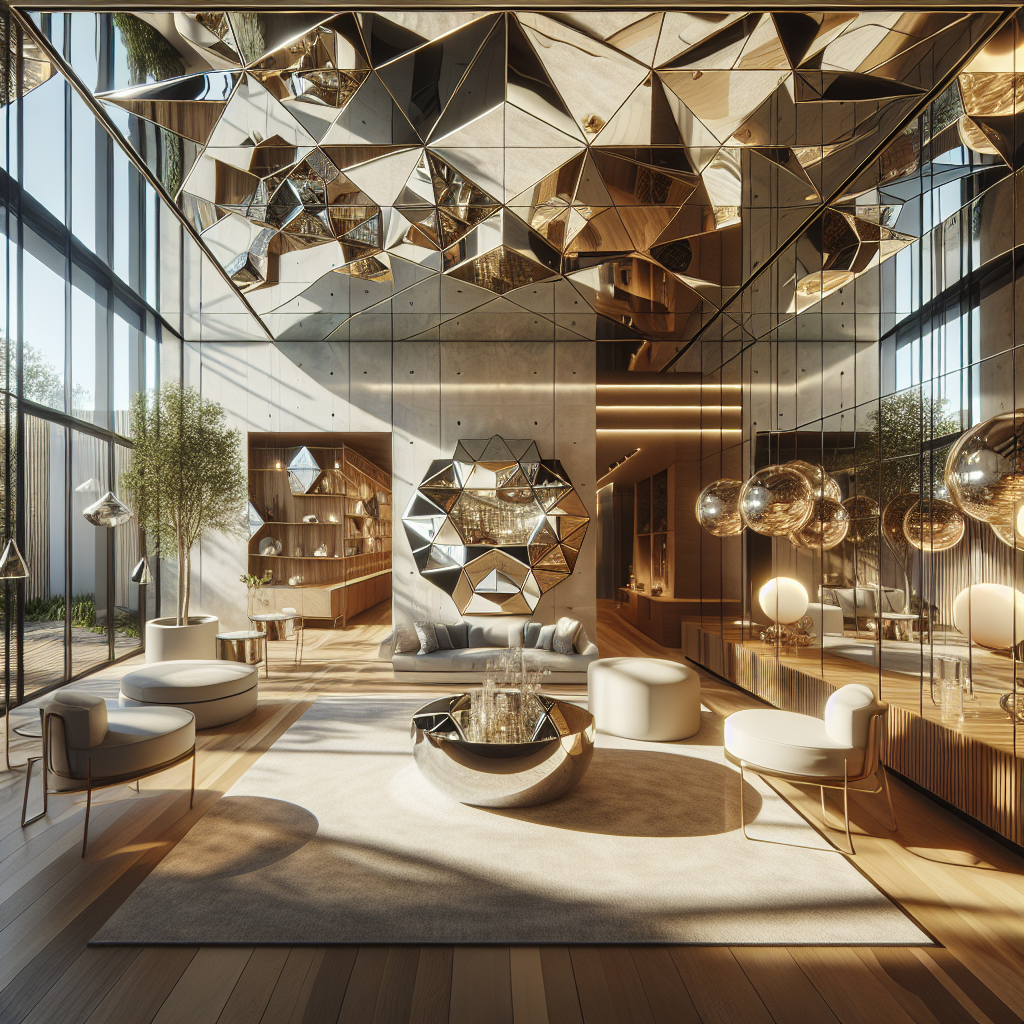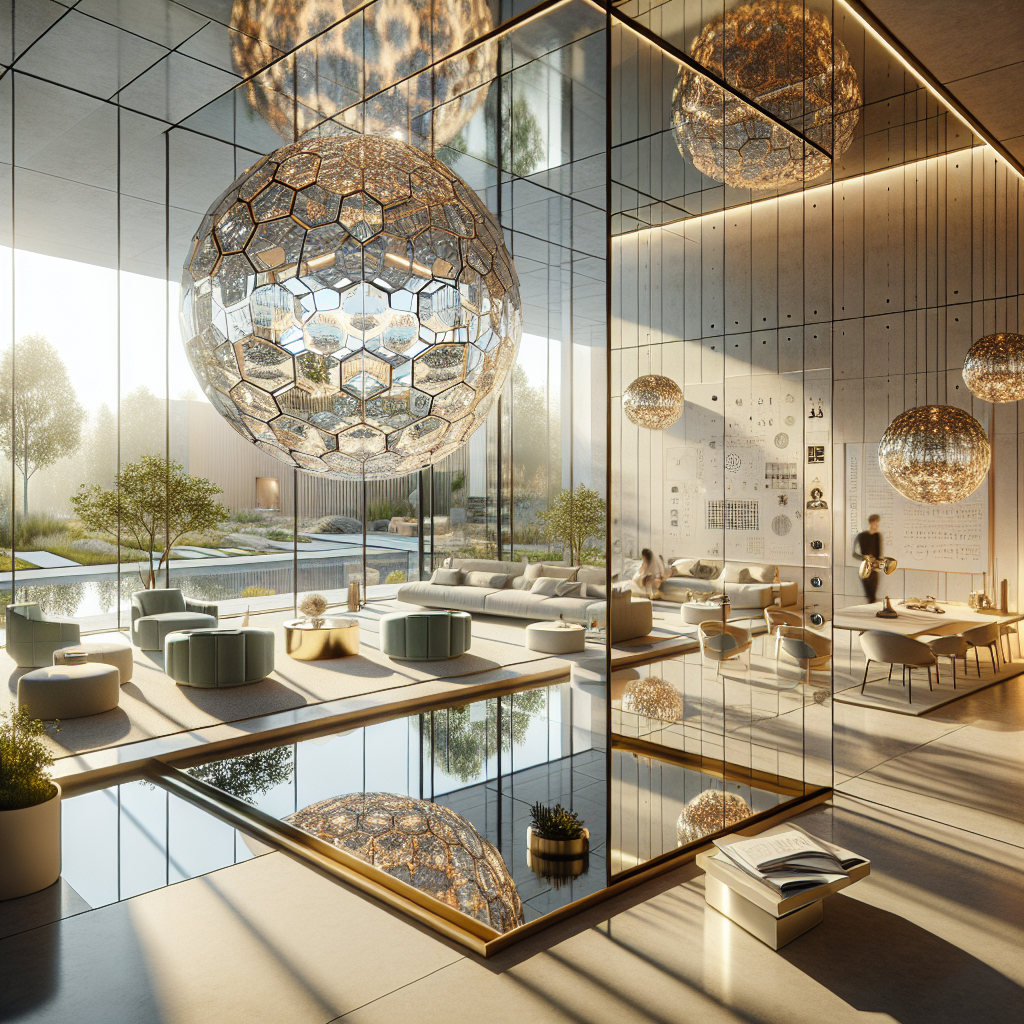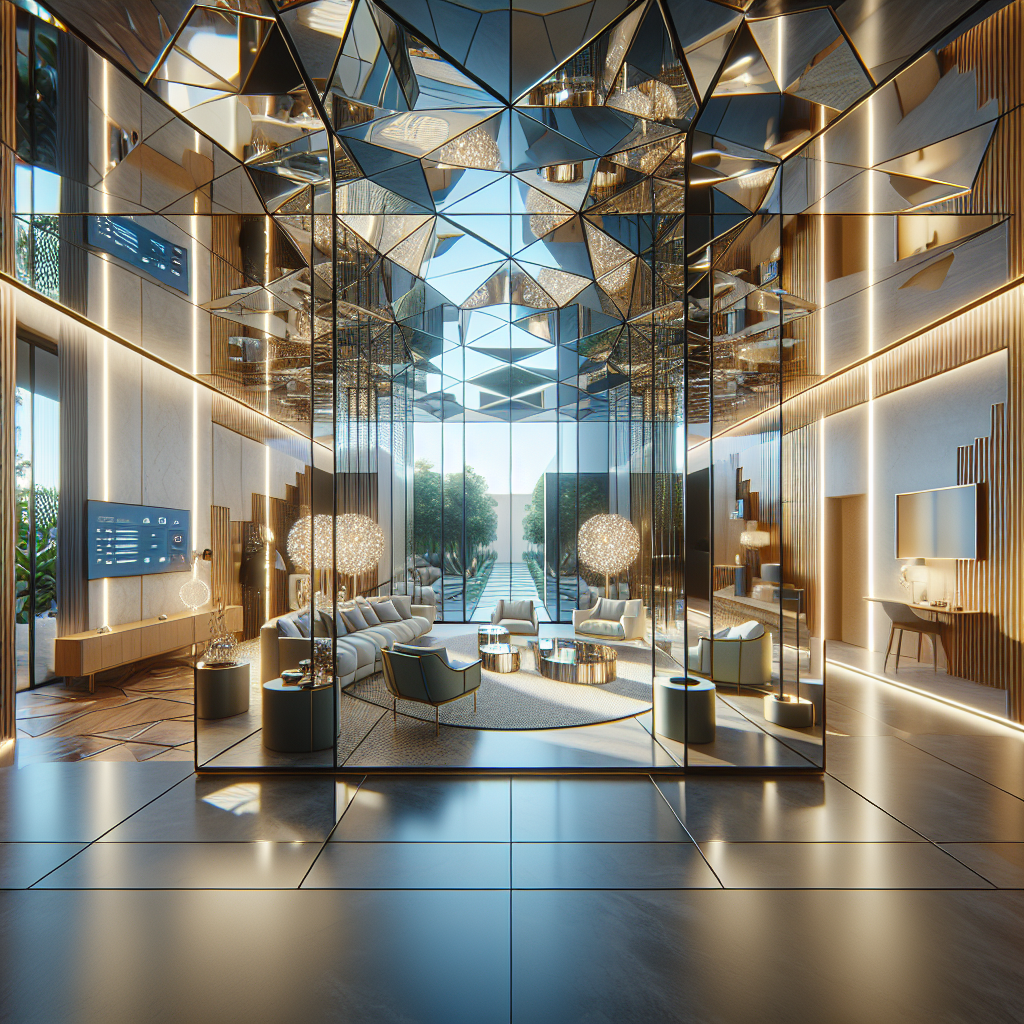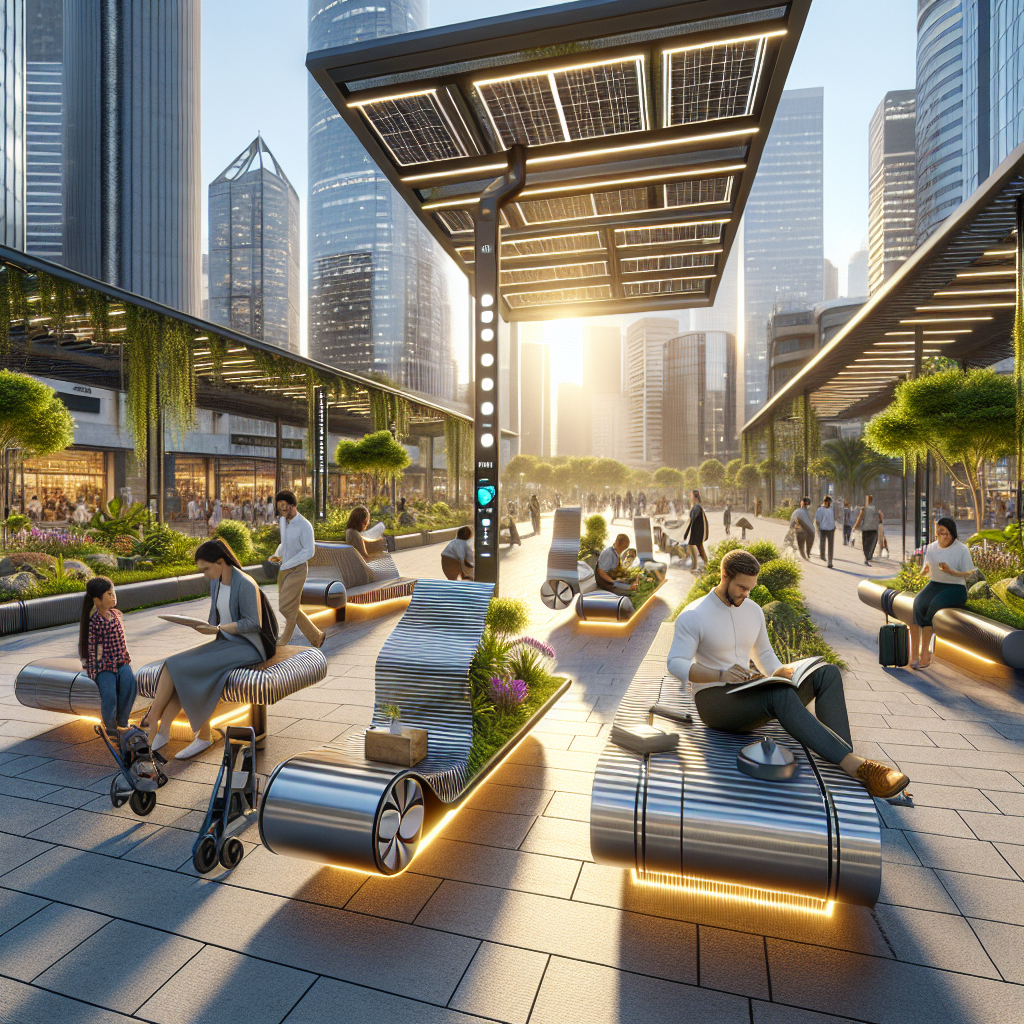Mirror Play: The Use of Reflective Surfaces in Interior Design

Mirror Play: The Allure of Reflective Surfaces in Modern Interior Design
The interplay of light and space has always been a fundamental aspect of interior design. Yet, in the contemporary design landscape, the strategic use of reflective surfaces has evolved into an art form of its own. Dubbed ‘Mirror Play’, this design trend leverages the transformative power of mirrors to create interiors that are not only visually arresting but also infinitely more dynamic and spacious.
At the heart of this trend lies the ability of mirrors to manipulate perception. Designers and architects are harnessing this capability to amplify natural light, craft illusory expanses, and curate a dialogue between the interior and its surroundings. Let’s delve into the reflective realm and explore how mirror play is reshaping our interior spaces.
The Magic of Mirrors: Expanding Spaces and Amplifying Light
One cannot overstate the impact of a well-placed mirror within an interior scheme. By reflecting the room back upon itself, mirrors offer an illusion of depth that can make even the most confined spaces feel palatial. The reflective surface bounces light around the room, illuminating dark corners and creating a luminous atmosphere that enhances the overall aesthetic.
Designers are becoming increasingly inventive with mirror placement. Beyond the traditional wall-mounted mirror, we’re seeing entire walls clad in reflective panels, mirrored furniture pieces, and even ceilings that capture the sky. This approach not only elevates the visual appeal but also serves a practical purpose, as seen in trendsetting interiors where mirrors are used to visually double the space.
Reflective Surfaces as Artistic Statements
Mirrors have transcended their utilitarian roots to become focal points of artistic expression. Designers are experimenting with antiqued finishes, tinted glass, and irregular shapes to create pieces that are as much sculptures as they are reflective surfaces. These statement mirrors serve as centrepieces, around which the rest of the interior narrative unfolds.
Consider, for instance, the interplay of a geometrically faceted mirror against a minimalist backdrop; it not only adds a layer of complexity but also refracts and fragments the view, creating a kaleidoscopic effect that is utterly captivating. The mirror becomes a canvas, reflecting the ever-changing environment and the lives of those within it.
Integrating Nature and Maximizing Views
Reflective surfaces offer a unique opportunity to bring the outdoors in. By strategically positioning mirrors to capture the view of the sky or a verdant garden, designers can blur the boundaries between interior and exterior. This seamless integration not only enhances the connection to nature but also maximizes the impact of available views, as detailed in discussions on natural light in design.
For urban dwellings with limited access to picturesque vistas, mirrors can be used to simulate windows or even create the illusion of additional architectural elements. This not only opens up the space but also introduces a sense of wonder, as the reflected imagery provides a constantly evolving tableau that shifts with the day’s progression.
Challenges and Considerations in Mirror Play
While the benefits of incorporating mirrors into interior design are manifold, there are challenges to consider. The placement of mirrors requires a thoughtful approach to avoid unwanted glare or the amplification of less desirable views. Designers must strike a balance between the reflective elements and the rest of the interior to avoid creating spaces that feel disorienting or overly stark.
Maintenance is another practical aspect to consider. Mirrors, especially large installations, require regular cleaning to maintain their reflective quality and aesthetic appeal. This is particularly important in high-traffic areas or spaces like kitchens and bathrooms, where mirrors can quickly become marred by fingerprints and splashes.
Future Reflections: The Evolving Role of Mirrors in Design
As we look to the future of interior design, the role of mirrors is set to expand even further. With advancements in technology, we’re beginning to see smart mirrors that not only reflect but also display information, control lighting, and even support augmented reality experiences. These innovations will undoubtedly open up new avenues for mirror play, merging functionality with the magic of reflection.
Moreover, sustainability concerns are prompting designers to consider the lifecycle of materials used in interiors. Mirrors, when sourced and disposed of responsibly, can be a sustainable choice, as they last for many years and can be recycled. The sustainability in interior design is a growing consideration that mirrors will need to align with.
From expanding spaces to creating artistic statements, the use of reflective surfaces in interior design offers endless possibilities. As we continue to explore the potential of mirror play, one thing is clear: mirrors will remain a beloved tool in the designer’s arsenal, reflecting not just our spaces but our imagination and ingenuity.
“`







